
Bee Removal in Shady Grove, TX
Bee removal in Shady Grove, TX by Spot On Pest Control, LLC. We relocate hives safely and prevent returns. Call now to book expert bee removal services.

Bee activity around your home or property in Shady Grove, TX is more than an annoyance - it can be a safety and structural concern. This page explains professional bee removal and relocation services for Grove-area properties, clarifies the difference between honeybees and stinging pests, outlines safe removal and relocation procedures, describes emergency responses for active hives, covers environmental considerations, and provides practical recommendations to reduce the chance of future hive establishment.
Why professional bee removal matters in Shady Grove, TX
Grove experiences warm, active seasons that encourage bees to forage and swarm. Spring and early summer bring natural swarming as colonies split, and hot summers can push bees to seek shaded voids in homes, sheds, trees, or ground cavities. Because bees can nest in hard-to-reach places and because misidentifying the species leads to the wrong response, safe, effective action starts with a professional assessment. Proper removal protects your family, preserves valuable pollinators when appropriate, and prevents recurring problems that can damage structures.

Common bee and stinging-pest situations in Shady Grove, TX
- Honeybee colonies in wall voids, attics, porch eaves, and tree cavities
- Ground-nesting bees or bumblebees in yards, paths, and garden beds
- Paper wasps, yellowjackets, or hornets building visible nests under eaves or in shrubs (behavior and treatment differ from honeybees)
- Large, active hives inside structures requiring immediate attention to prevent structural damage or hive expansion
- Swarms found on trees, fences, or exterior surfaces during spring dispersal
How professionals diagnose the problem
- Identification: Visual and behavioral cues are used to determine if the insects are honeybees (stacked, hairy bodies; calm, honeycomb present) or stinging pests (smoother bodies, aggressive defense, paper or mud nests). Correct ID guides the response.
- Location survey: Inspectors track flight paths to locate nest entrances - in walls, attics, ground holes, or trees. Hidden colonies often cause staining, wax buildup, or unusual activity inside walls.
- Risk assessment: Technicians evaluate proximity to living spaces, risk to occupants and pets, potential structural damage, and whether relocation is feasible.
- Treatment plan: Based on species, hive size, and site, a plan is created that may include live relocation, nest removal, or targeted control for aggressive stinging pests.
Safe bee removal and relocation procedures (what to expect)
For honeybees, relocation is the preferred option whenever possible because honeybees are important pollinators. Standard professional relocation steps include:
- Timing and preparation: Work is planned for early morning or late evening when foraging activity is low. Occupants are advised to stay clear of the area.
- Securing the scene: Technicians isolate entrances and establish safe access, using protective gear appropriate to the hive and location.
- Queen capture and colony transfer: Relocation specialists locate the queen and transfer brood, workers, and comb into transport boxes or nucleus (nuc) hives. Capturing the queen encourages remaining workers to follow.
- Removal of comb and debris: Once the main colony is removed, comb, honey, and wax are taken out of the structure. This prevents reattraction by residual honey scents.
- Structural repair recommendations: Professionals note any openings, vents, or damage that allowed bees to enter and provide guidance for sealing and repairs to prevent reentry.
- Post-relocation follow-up: A follow-up check ensures the bees successfully reestablished and the property shows no residual activity.
For non-honeybee stinging pests (yellowjackets, hornets, paper wasps), relocation is often not feasible or safe. Treatment options typically focus on removal of nests and targeted control to protect people and pets while minimizing collateral environmental impact.
Nest removal and structural considerations
When a hive occupies walls, attics, or insulation, comprehensive nest removal is necessary to avoid long-term problems:
- Full comb removal: Removing all wax, propolis, and honey prevents odors that attract new colonizers and stops mold or structural staining.
- Insulation and material replacement: Severely contaminated insulation or structural materials may need replacement to eliminate nests and repair damage.
- Sealing entry points: After removal, sealing gaps, vents, and openings is crucial to prevent another colony from moving in.
- Cleaning and deodorizing: Removing residual bee pheromones and honey odor reduces the risk of re-colonization by other bees or pests.
Emergency responses for active hives
Active hives inside living spaces or large swarms near frequently used areas present immediate risk. Emergency response steps include:
- Keep people and pets away from the hive area until professionals assess the situation.
- Do not spray or attempt to remove a hive yourself; improvised attempts often agitate bees and increase stings.
- Secure doors and windows near the hive to reduce indoor bee intrusion.
- In the case of allergic reactions to stings, seek medical attention promptly. Professionals trained in emergency bee removal will prioritize safe containment and rapid removal while protecting inhabitants.
Environmental and community considerations
Relocating honeybees supports local pollination, backyard gardens, and agricultural crops around Grove. Responsible removal services balance human safety with environmental stewardship by:
- Preferring live relocation for honeybees whenever feasible.
- Minimizing pesticide use and choosing targeted treatments for non-honeybee pests.
- Coordinating with local beekeeping networks when appropriate to rehome colonies.
- Advising on landscape choices that both encourage beneficial pollinators and reduce conflict near structures.
Preventing future hive establishment in Shady Grove, TX
Simple, practical steps reduce the chance of future hives on your property:
- Seal openings: Regularly inspect and seal gaps in siding, soffits, vents, and around rooflines.
- Maintain screens and vents: Keep attic and crawlspace vents screened and in good repair.
- Manage landscaping: Trim branches away from roofs and remove or relocate attractive food sources like exposed compost or sugary spills.
- Address ground cavities: Fill rodent burrows, tree cavities, and exposed soil pockets that can invite ground-nesting bees.
- Routine inspections: Seasonal checks by a trained professional catch early activity before it becomes a large colony problem.
Conclusion - protecting people and pollinators in Shady Grove, TX
Effective bee removal in Shady Grove, TX balances safety, structural protection, and environmental responsibility. Correct identification, careful relocation when possible, complete nest removal when necessary, and proactive prevention combine to keep your property and community safe while supporting the essential role of pollinators in the local ecosystem. If you suspect a hive or notice increasing bee activity, rely on a trained professional assessment to determine the safest, most sustainable course of action.
Our Services
Our pest control services cover ants, termites, bed bugs, rodents, mosquitoes, and other common pests, with customized solutions for both residential and commercial properties.
.png)






